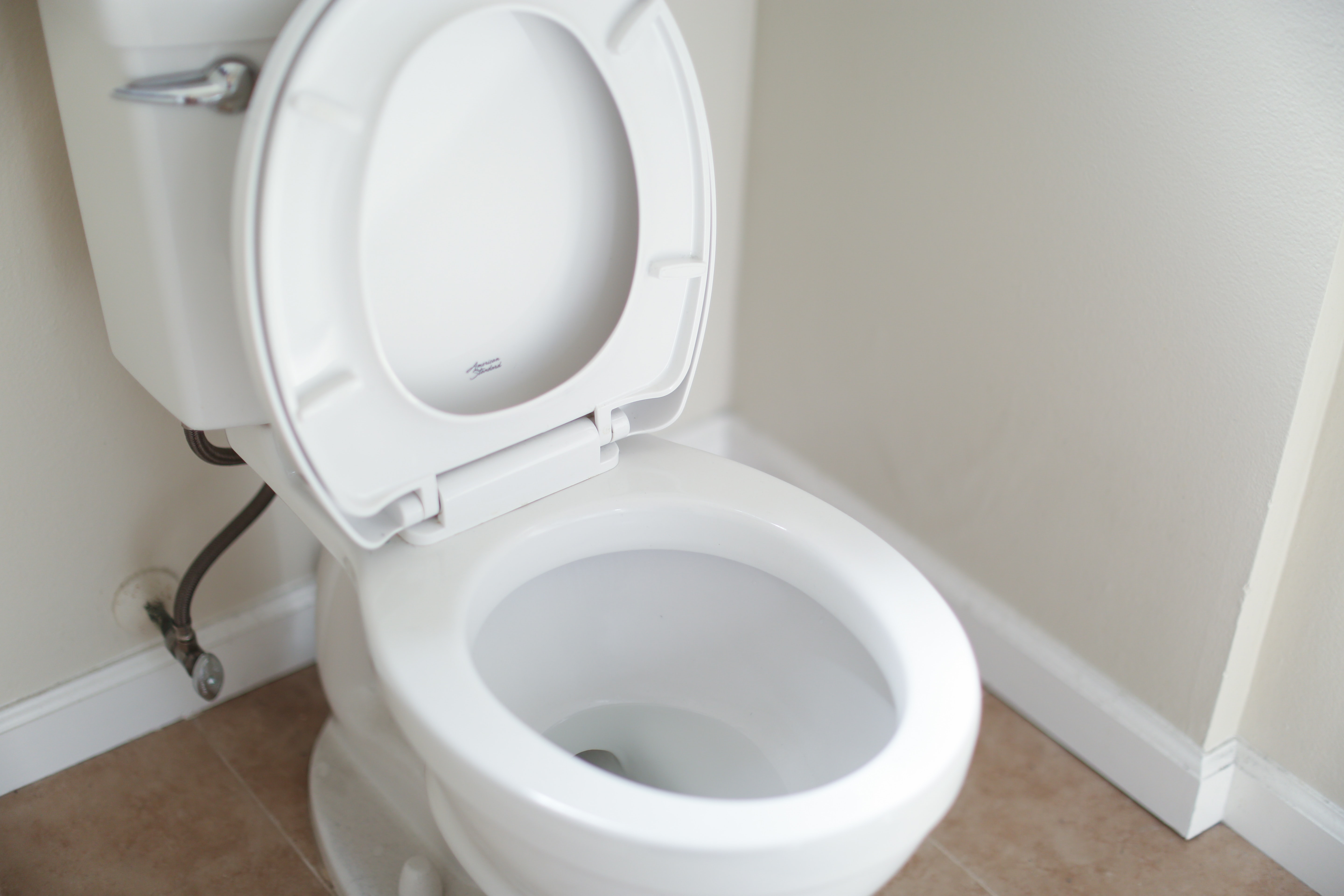

If it requires repairs, it’s often essential to know how to drain a toilet. That can mean removing water from the tank but, for some repairs, it needs to be removed from the bowl as well.
You might equally want to remodel your bathroom and swap an old-fashioned water-wasting model to install a new toilet with a modern style that doesn’t use more than it needs to with every flush. If that’s the case, the old toilet will need to be emptied before removal to avoid a nasty flood.
We’ve got the skinny on how to drain a toilet right here along with advice from the experts to make the task easier.
How to drain a toilet
Draining a toilet is a job a DIYer can do and, provided you prepare carefully, it’s not the messy job you might suppose. Be aware that you should unclog your toilet beforehand if needed as otherwise the bowl could overflow.
Likewise, if your toilet won't flush, that will be an issue for this DIY so fixing this is imperative too.
You’ll probably already have the equipment you need to drain a toilet. We’d definitely advise putting on old clothes for the job, too, and wearing gloves. Here’s how to get started, draining both the toilet tank, and the toilet bowl.
You will need:
- Old towels
- Rubber gloves
- Sponge
- Bucket
1. Prep the room
You’ll want to minimize splashing on the floor. The solution is to lay old towels around the base of the toilet. Lift the seat as well as its cover to keep them cleaner during the process.
2. Turn off the water supply
The toilet has a continuous water supply so you should first shut off this supply.
You’ll need to find the shutoff valve. ‘It’s usually close to where the pipe comes out of the wall,’ explains Illinois licensed general contractor Bill Samuel of Blue Ladder Development. The valve will usually have a small knob, which should be turned clockwise to stop the water.
Bear in mind that turning off the water supply like this can be useful for another reason. ‘It's actually a good thing to exercise a valve to turn the water supply off and back on,’ explains Cody Dickson, a licensed plumber in North Carolina at Dickson Plumbing. ‘This can prevent the valve from seizing. Although this is not recommended on valves over 10 to 15 years as they tend to leak.‘
If the valve is old, it may be that it doesn’t shut off the water entirely so, if necessary, shut off the main water supply.
3. Take off the toilet tank lid
In order to be able to check if the water is draining, you’ll need to see inside the toilet tank, so take off the lid. Be mindful that it can crack, so be careful in lifting it off and in setting it down, which is best done on a soft surface like a towel or bath rug.
4. Flush the toilet
To remove the water from the tank, you now need to flush the toilet. Hold the flush down until the tank empties. Still some water left? Use the sponge to soak it up, squeezing the sponge out over the toilet bowl.
Note that if the tank doesn’t drain, it might be that the shutoff valve wasn’t completely closed, or it may be that it isn’t working as it should and you will need to shut off the supply to your house temporarily.
5. Drain the toilet bowl
To drain the toilet bowl, you actually need to pour water down it, which works like flushing it. Fill a bucket with around 3 gallons (13.5 litres) of cold water.
Pour the water into the toilet bowl slowly, lifting the bucket higher as you pour, and the water should drain out.
For the water left, use a sponge to soak it up, then squeeze it into a bucket.
Pro tip: ‘If you need drain repairs, I would recommend emptying the toilet bowl using a wet/dry vacuum,’ says Jake Romano, project manager at John The Plumber. ‘Our plumbers are equipped with big shop vacs. We suck all the water out of the bowl this way, and it only takes a few seconds.
‘If your toilet is clogged, and a lot of water is filled in the bends of the toilet and toilet drain, I would put the vacuum tube into the mouth of the drain, then block it with a rag. This can withdraw some of the water that has accumulated in the bends of the toilet, so when you remove the toilet, you don’t get a big mess!
‘If you don’t have a wet/dry vacuum, you can use a cup and bucket to pull the water out, as well.’
Is it bad to shut off water to a toilet?
It isn’t bad to shut off water to a toilet and, in fact, it’s something you’ll need to do to drain the toilet. There is one thing to bear in mind. ‘Water supply valves don’t last forever,’ explains Romano. ‘The more you use those valves, the shorter their life will be. Shutting the water off to the toilet may lead to needing a shutoff valve replacement.’
Can I flush a toilet if the water is off?
You can flush a toilet if the water is off. ‘When you turn off the water to your toilet (often with a shutoff valve), the toilet will still have a full tank of water from the last flush,’ explains industrial maintenance professional Jake Brandon of JBBrandon. ‘Therefore, after shutting off the water, you will be able to flush it.’
Had to shut off the main water supply valve because the shutoff valve didn’t completely stop the water? ‘You could always take the lid off, fill up your tank with a gallon or so of water, and flush it again,’ adds Jake.
Join our newsletter
Get small space home decor ideas, celeb inspiration, DIY tips and more, straight to your inbox!

Sarah is a freelance journalist and editor writing for websites, national newspapers, and magazines. She’s spent most of her journalistic career specialising in homes – long enough to see fridges become smart, decorating fashions embrace both minimalism and maximalism, and interiors that blur the indoor/outdoor link become a must-have. She loves testing the latest home appliances, revealing the trends in furnishings and fittings for every room, and investigating the benefits, costs and practicalities of home improvement. It's no big surprise that she likes to put what she writes about into practice, and is a serial house revamper. For Realhomes.com, Sarah reviews coffee machines and vacuum cleaners, taking them through their paces at home to give us an honest, real life review and comparison of every model.
-
 A $200 fluted panel transformed my drab kitchen in just one weekend
A $200 fluted panel transformed my drab kitchen in just one weekendHow to install a fluted kitchen panel: A speedy and achievable DIY tutorial even for DIY novices
By Claire Douglas
-
 My first apartment makeover: 5 renovation mistakes I learned the hard way, and how you can avoid them
My first apartment makeover: 5 renovation mistakes I learned the hard way, and how you can avoid themThese are 5 things to avoid in your apartment makeover. Trust me, I learned these the hard way during my first renovation project
By Luisa Rossi
-
 How to replace a broken staircase spindle in 30 minutes flat
How to replace a broken staircase spindle in 30 minutes flatA missing or broken spindle on a staircase is not only unsightly, but it can be a real hazard. This is how to fix it in a few quick steps.
By Kate Sandhu
-
 An IKEA Billy bookcase hack inspired this cute media wall DIY
An IKEA Billy bookcase hack inspired this cute media wall DIYThis cute DIY was inspired by an IKEA Billy bookcase hack and brought a ton of symmetry to an otherwise basic media wall space.
By Camille Dubuis-Welch
-
 Share your small space glow up to win $150 in the Real Homes competition
Share your small space glow up to win $150 in the Real Homes competitionShow off your creativity and DIY skills to win $150 and for the chance to be featured exclusively in Real Homes magazine
By Camille Dubuis-Welch
-
 This oversized headboard looks designer, and takes 5 steps to DIY
This oversized headboard looks designer, and takes 5 steps to DIYSuper simple to DIY, this oversized headboard will give your bedroom space all the designer vibes you could dream of.
By Claire Douglas
-
 My DIY range hood and backsplash build gave my kitchen the perfect farmhouse finish
My DIY range hood and backsplash build gave my kitchen the perfect farmhouse finishI craved charm in my kitchen space and adding a custom range hood and shelving was the best move.
By Brooke Waite
-
 How to paint a radiator in 7 steps
How to paint a radiator in 7 stepsPainting radiators properly is all about choosing the right paint and the best process. Get interior designer-worthy results with our how-to.
By Kate Sandhu